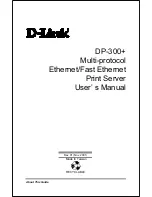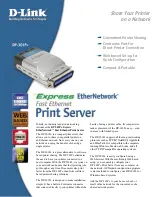
278
IBM z13s Technical Guide
7.3.58 Link aggregation support for z/VM
Link aggregation (IEEE 802.3ad) that is controlled by the z/VM Virtual Switch (VSWITCH)
allows the dedication of an OSA-Express5S or OSA-Express4S port to the z/VM operating
system. The port must be part of an aggregated group that is configured in Layer 2 mode.
Link aggregation (trunking) combines multiple physical OSA-Express5S or OSA-Express4S
ports into a single logical link. This configuration increases throughput, and provides
nondisruptive failover if a port becomes unavailable. The target links for aggregation must be
of the same type.
Link aggregation is applicable to CHPID type OSD (QDIO). Link aggregation is supported by
z/VM V6R2 and later.
7.3.59 Multi-VSwitch Link Aggregation
Multi-VSwitch Link Aggregation support allows a port group of OSA-Express features to span
multiple virtual switches within a single z/VM system or between multiple z/VM systems.
Sharing a Link Aggregation Port Group (LAG) with multiple virtual switches increases
optimization and utilization of the OSA Express when handling larger traffic loads. Higher
adapter utilization protects customer investments, which is increasingly important as 10 Gb
deployments become more prevalent.
The minimum support requirements are listed in Table 7-49.
Table 7-49 Minimum support requirements for Multi-VSwitch Link Aggregation
7.3.60 QDIO data connection isolation for z/VM
The QDIO data connection isolation function provides a higher level of security when sharing
an OSA connection in z/VM environments that use VSWITCH. The VSWITCH is a virtual
network device that provides switching between OSA connections and the connected guest
systems.
QDIO data connection isolation allows disabling internal routing for each QDIO connected. It
also allows creating security zones and preventing network traffic between the zones. It is
supported by all OSA-Express5S and OSA-Express4S features on z13s and zBC12.
7.3.61 QDIO interface isolation for z/OS
Some environments require strict controls for routing data traffic between servers or nodes. In
certain cases, the LPAR-to-LPAR capability of a shared OSA connection can prevent such
controls from being enforced. With interface isolation, internal routing can be controlled on an
LPAR basis. When interface isolation is enabled, the OSA discards any packets that are
destined for a z/OS LPAR that is registered in the OSA Address Table (OAT) as isolated.
QDIO interface isolation is supported by Communications Server for z/OS V1R12 or later, and
all OSA-Express5S and OSA-Express4S features on z13s.
Operating system
Support requirements
z/VM
z/VM V6R3
a
a. PTF support is required.
Summary of Contents for z13s
Page 2: ......
Page 3: ...International Technical Support Organization IBM z13s Technical Guide June 2016 SG24 8294 00 ...
Page 24: ...THIS PAGE INTENTIONALLY LEFT BLANK ...
Page 164: ...136 IBM z13s Technical Guide ...
Page 226: ...198 IBM z13s Technical Guide ...
Page 256: ...228 IBM z13s Technical Guide ...
Page 414: ...386 IBM z13s Technical Guide ...
Page 464: ...436 IBM z13s Technical Guide ...
Page 476: ...448 IBM z13s Technical Guide ...
Page 498: ...470 IBM z13s Technical Guide ...
Page 502: ...474 IBM z13s Technical Guide ...
Page 568: ...540 IBM z13s Technical Guide ...
Page 578: ...550 IBM z13s Technical Guide ...
Page 584: ...556 IBM z13s Technical Guide ...
Page 585: ...ISBN 0738441678 SG24 8294 00 1 0 spine 0 875 1 498 460 788 pages IBM z13s Technical Guide ...
Page 586: ......
Page 587: ......
Page 588: ...ibm com redbooks Printed in U S A Back cover ISBN 0738441678 SG24 8294 00 ...
















































